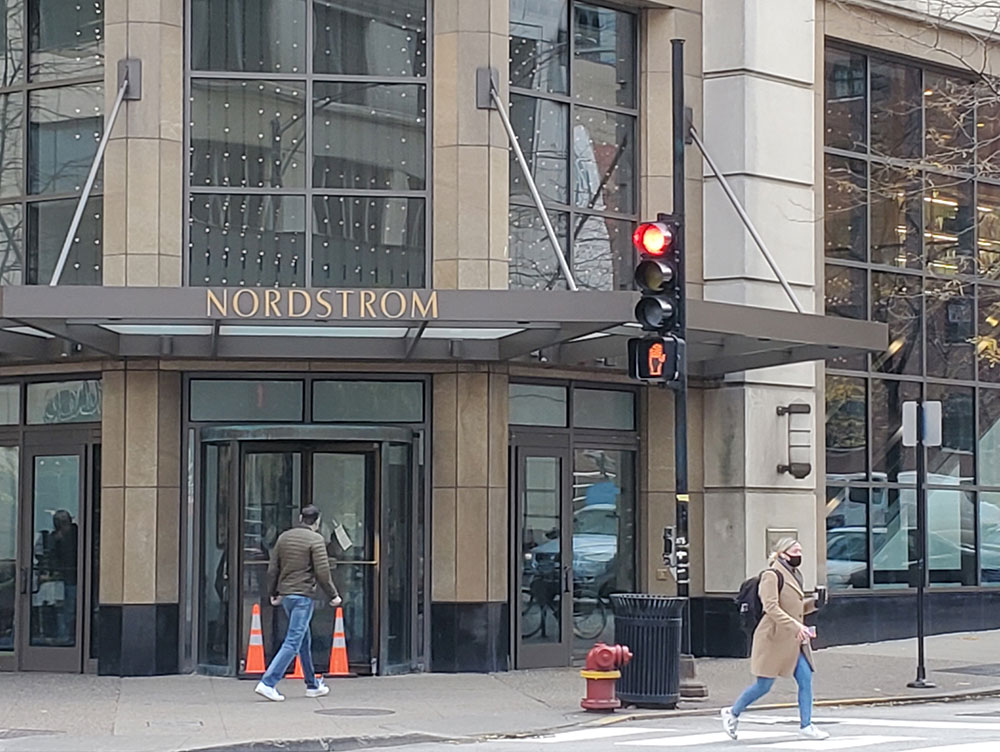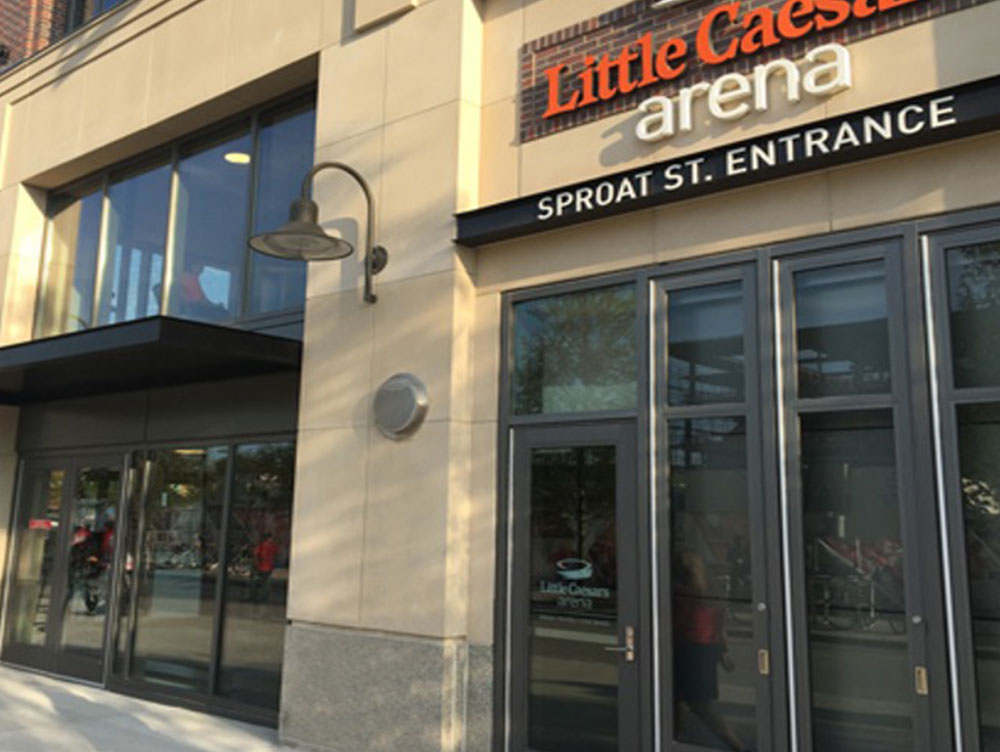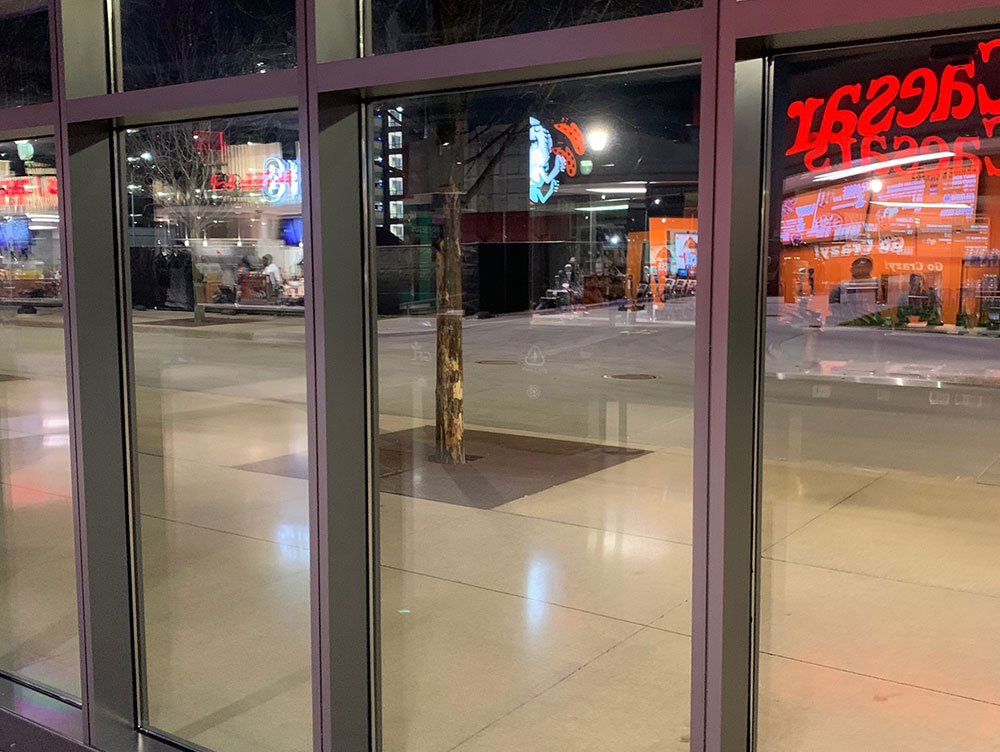Contact us to learn more
For general inquiries, product information, and free quotes, fill out the form below and a representative will contact you shortly.
Address
500 Grant Ave, East Butler, PA 16029
Phone
866-412-6977
ACCESSGARD® Forced Entry Glazing products are designed for Retail, Commercial, Corporate Offices, Data Centers, Houses of Worship, Higher Education, Cannabusiness, Airports, Hospital/Psychiatric, etc.
ACCESSGARD® offers considerable Forced Entry Delay to Assailants, Rioters, Smash & Grab, Burglary & Work-Force-Violence protecting Assets, Personnel, Customers & Property.
ACCESSGARD® Security Glazing | ACCESSGARD® -2118 Security Glazing | ||
|---|---|---|---|
Download | PDF Specification | PDF Specification | PDF Specification |
Thickness | 5/16” | 3/8” – 1/2″ | 9/16” |
Availability | Available for ONLY retrofit monolithic and interior | Available for ONLY retrofit monolithic and interior | Available for ONLY retrofit monolithic and interior |
Maximum Size | less than 20 sq. ft. | 72 x 130* | 60 x 96* |
Weight | 3.68 lbs./sq. ft. | 4.16 – 5.80 lbs./sq. ft. | 4.95 lbs./sq. ft. |
Standard Compliance | |||
Forced Entry | ASTM F1233-08 Class 1.3 | ASTM F1233-08 Class 1.3 | ASTM F1233-08 Class 1.4 |
Test Duration | 6 min 47 sec | 6 min 47 sec | 17 min |
Safety | ANSI Z97.1, CPSC 16 CFR 1201 (Cat. I and II), Hurricane Compliant | ||
Manufacturing | ASTM C 1036, ASTM C 1048, ASTM C 1349, ASTM C 1172 | ||
Options | Clear | Tinted Glass, Reflective Glass, Fire-Rated Glass, Low-E Glass, Insulating Glass Units | |
*Actual glass thickness may vary due to glass size options and design loads.
Isoclima offers a wide range of security glazing products to protect a wide variety of buildings, including high-performance forced-entry and bullet-resistant constructions that can be installed in lobbies, access points, shelters, transactional windows and other areas where heightened security is desired.
GOOD | Better | Best | |
|---|---|---|---|
ACCESSGARD® SECURITY GLAZING | ATTACK RESISTANT | BULLET RESISTANT | |
Cost | $ | $$$ | $$$$ |
Level of protection | Available for ONLY retrofit monolithic and interior | Available for ONLY retrofit monolithic and interior | Available for ONLY retrofit monolithic and interior |
Thickness | 5/16” | 7/16” – 1 1/4″ | 3/4” – 2 1/4” |
Construction | Laminated security glass | Glass-CladPoly w/ glass on exposed surfaces | Glass-CladPoly w/ Poly on safe side. All glass make-ups available.
|
*Actual glass thickness may vary due to glass size options and design loads.
TEST SEQUENCE | TEST IMPLEMENTS | # OF IMPACTS | SEQUENCE TIME (SECONDS) | CLASS ACHIEVED | NOTES |
|---|---|---|---|---|---|
1 | Ball-Peen Hammer | 10 | 22 | 1.0 | One technician delivered 10 impacts with a Ball-Peen Hammer, no penetration or openings were created. |
2 | Ball-Peen Hammer | 10 | 24 | 1.1 | A second technician delivered 10 additional impacts with a Ball-Peen Hammer, no penetration or openings were created. |
3 | 1 1/2″ Diameter Pipe / 12-lb Sledge | 25 | 174 | 1.2 | One technician held the pipe while one technician swung a 12-lb Sledge Hammer. The pipe was held at different angles to evaluate the resistance of the sample to both puncture and gouging. |
4 | Extinguisher, CO2 | NA | 60 | 1.3 | Extinguisher fully discharged for 60 seconds. This step is designed to freeze the materials, mimicking cold weather and making the components more brittle for subsequent attack. Other products in the market avoid this step. |
5 | Sledge Hammer | 25 | 44 | 1.4 | ACCESSGARD® :
Immediately after discharging the extinguisher in Test Sequence 4, 19 impacts were delivered to the sample utilizing a Sledge Hammer. Testing was terminated after the 19th impact as the opening created in the sample allowed Body Passage per IAW ASTM F1233-08 Section 10.2.4.2.
ACCESSGARD® -2118: Immediately after discharging the extinguisher in Test Sequence 4, 25 impacts were delivered to the sample utilizing a Sledge Hammer. |
6 | Propane Flame Torch | 300 | 1.5 | ACCESSGARD® -2118:
The propane torch was used IAW ASTM F1233-08, Section A1.5.2. The flame was continuously applied and was held such that the blue tip of the torch flame was no further than 1-in from the surface of the sample. The flame was initially held at the location of the hole that allowed the 1/8-in contraband rod to pass through at the completion of Sequence 5. The sample material began to melt and the torch flame was used to enlarge the opening. At the conclusion of this sequence, a fine mist of water was used to extinguish the still-burning material. The Forced-Entry Shape was able to pass through the hole created during this sequence. |
See installation and cleaning instructions.
Please note that only the glazing has been tested to the attack tools, techniques, methods, testing procedures and durations detailed in ASTM F 1233-08, Class 1.3 and 1.4. GSG makes no warranty, and claims no responsibility for any loss, damage or claim for any tools, devices, techniques, or methods used, or any attack duration not otherwise detailed in ASTM F 1233-08, Class 1.3 and 1.4. ACCESSGARD™ security glass products were also tested to additional non-industry standard test protocols. Please contact us for more details at accessgard@isoclimasg.com or 866.412.6977.



For your convenience, the text below can be used to email your business owner or community safety contact:
The safety of our assets, community members and personnel is something that we are interested in improving. Based on our research, we have found that ACCESSGARD Security Glass provides improved security compared to the existing entryways in your facility. ACCESSGARD is currently installed nationwide, including retail, social venues, and places of worship. We know that the glass in a business can be a vulnerable entry point into the building and that replacing with bullet resistant glass is expensive and requires major renovations. ACCESSGARD Glass can be retrofitted into existing doors and frames, making this a cost-effective way to upgrade your windows to be able to deter assailants for up to 16 minutes. The below link has a lot of information on how beneficial this product is for schools.
Accessgard – Isoclima Specialty Glass, LLC (isoclimasg.com)
Copy and paste the above and send it to your facility safety personnel.
For general inquiries, product information, and free quotes, fill out the form below and a representative will contact you shortly.
500 Grant Ave, East Butler, PA 16029
866-412-6977